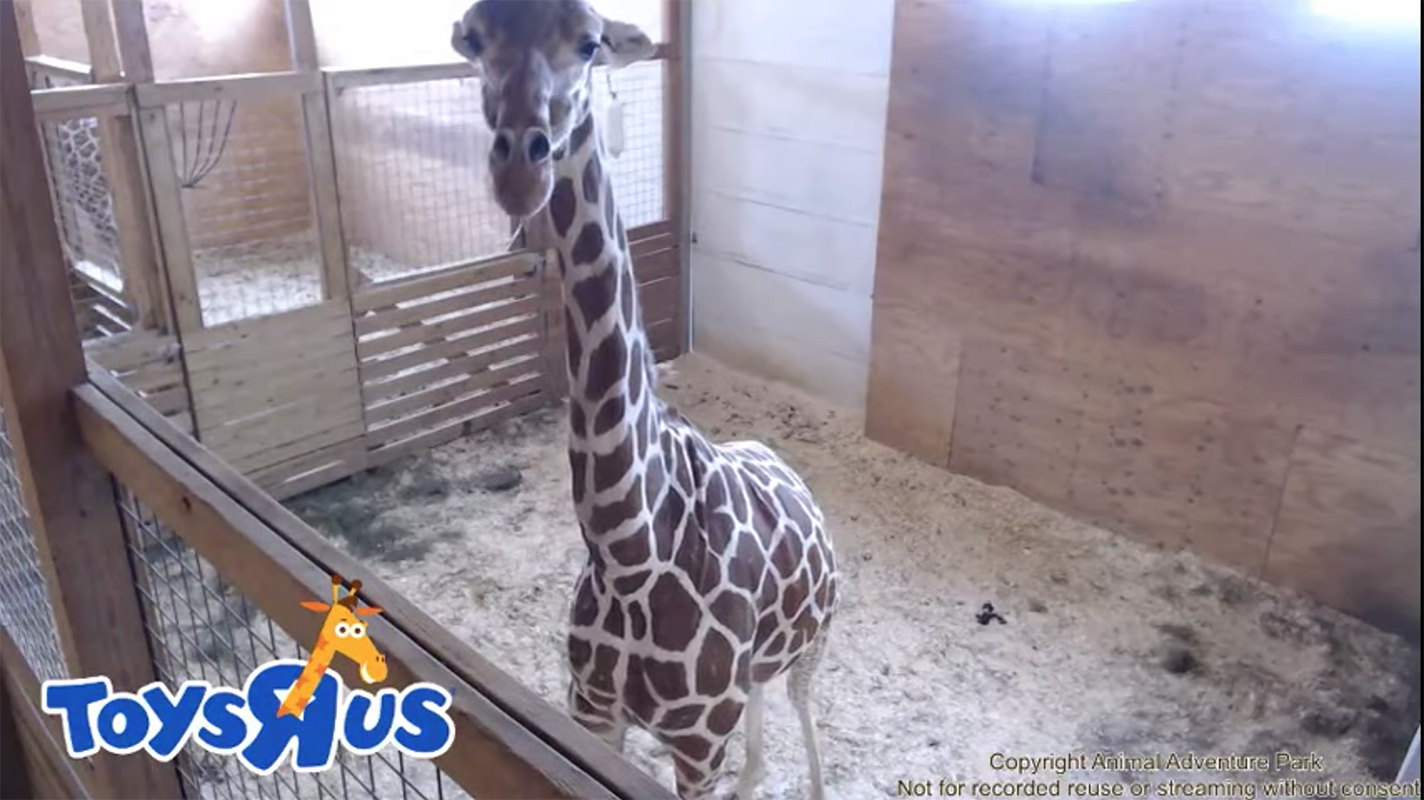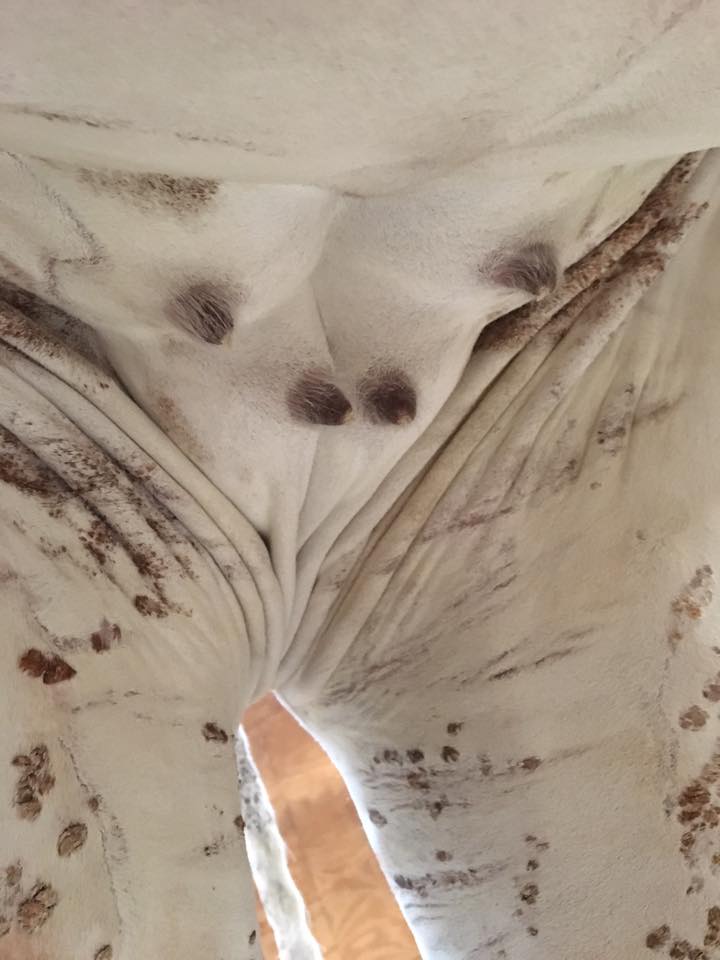Pregnant Giraffe Keeps Anxious Viewers Waiting

Millions of internet viewers are tensely following the video feed featuring a pregnant giraffe named April. And more than one month after the animal's distended belly took the internet by storm, the baby giraffe that is so greatly anticipated has yet to emerge.
April appears unconcerned about still being pregnant. Though her belly hangs lower than ever and her baby's kicks are vigorous and visible, the mother giraffe appears none the worse for wear, placidly going about her daily routine under the camera's unblinking eye, in her pen at Animal Adventure Park (AAP) in Harpursville, New York.
In a Facebook update on the evening of March 26, April's keepers described "increased calf activity in comparison to this morning and last evening," and reported the giraffe's appetite as "strong." [Baby Watch! 'Giraffe Cam' Tracks Expectant Mother]
By the morning of March 27, April was "relaxed," and the animal frequently raised and lowered her tail, and experienced "significant mammary change," her caregivers posted on Facebook. But while the mammary change could suggest that her delivery time was approaching nearer, April's keepers did not report signs of active labor.
Giraffe mothers carry their young for about 15 months, and while April's caregivers observed breeding behavior between April and her mate, Oliver, in the middle of October 2015, it is hard to tell for sure if conception occurred, AAP owner Jordan Patch told Live Science in February.
If April didn't conceive then, she might have conceived during her next cycle, 17 days later, Patch explained.
One sign that birth may be imminent is that waxy plugs have appeared over April's teats, according to Patch. These work to keep the colostrum, the highly nutritious "first milk" secreted by mammary glands, from leaking out. AAP shared photos on March 27 on Facebook that showed the whitish plugs, which look "like dried toothpaste at the end of a tube," Patch added.
Sign up for the Live Science daily newsletter now
Get the world’s most fascinating discoveries delivered straight to your inbox.

At the start of every day, April's keepers check on her and make a status report, which is relayed to the veterinarian by AAP officials, Patch told Live Science in an email. The keepers also provide April's morning meal, reloading the hay feeders and dishing up 4 to 6 quarts (3.8 to 5.7 liters) of a specialized dry food produced commercially for giraffes and other African grazers.
Pregnant April's portion is a special feed blend that has a higher calorie count and contains extra supplements for pregnant and lactating mothers, Patch added.
In the middle of the day, the giraffes are given enrichment puzzle feeders, which provide romaine lettuce and carrot treats as a reward for successful puzzle-solving. Another meal at the end of the day, during the keepers' evening check, provides the giraffes with additional servings of hay and feed, Patch said.
The veterinarian visits April every afternoon for a checkup and to monitor any changes in her condition.
"We look for swelling in the vulva, vaginal discharge, mammary development, wax-cap production and lactation, and general mood and behavior," Patch said in an email. Today (Mar. 27), April's back-end swelling had approximately doubled in size from the previous week.
Giraffes can give birth at any hour of the day or night, but April's most ardent watchers may want to set their alarm clocks for early morning hours, as "many facilities report predawn births," Patch told Live Science.
Original article on Live Science.

Mindy Weisberger is an editor at Scholastic and a former Live Science channel editor and senior writer. She has reported on general science, covering climate change, paleontology, biology and space. Mindy studied film at Columbia University; prior to Live Science she produced, wrote and directed media for the American Museum of Natural History in New York City. Her videos about dinosaurs, astrophysics, biodiversity and evolution appear in museums and science centers worldwide, earning awards such as the CINE Golden Eagle and the Communicator Award of Excellence. Her writing has also appeared in Scientific American, The Washington Post and How It Works Magazine. Her book "Rise of the Zombie Bugs: The Surprising Science of Parasitic Mind Control" will be published in spring 2025 by Johns Hopkins University Press.










